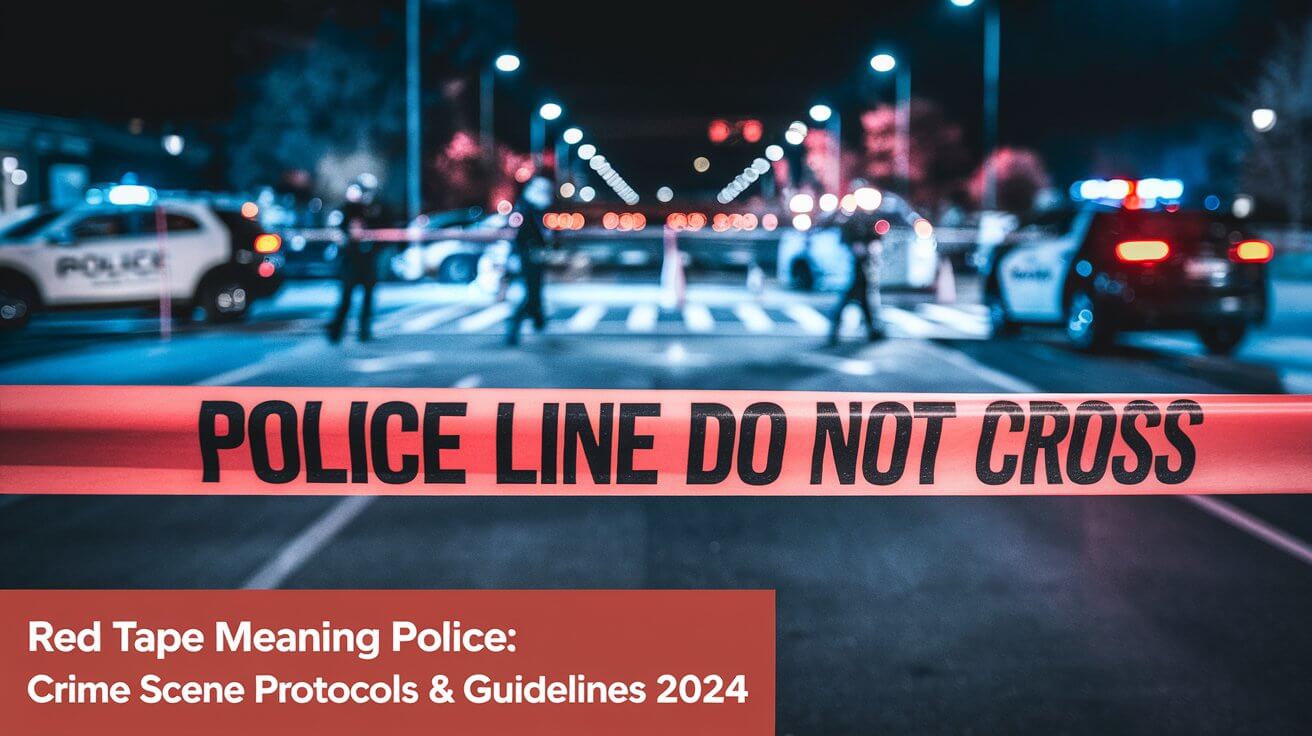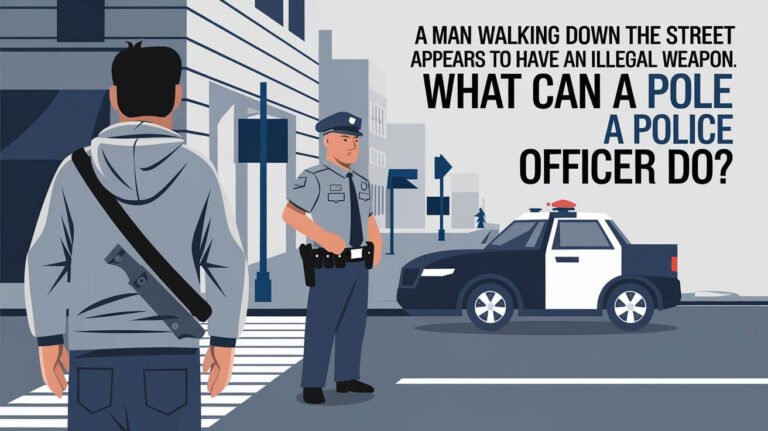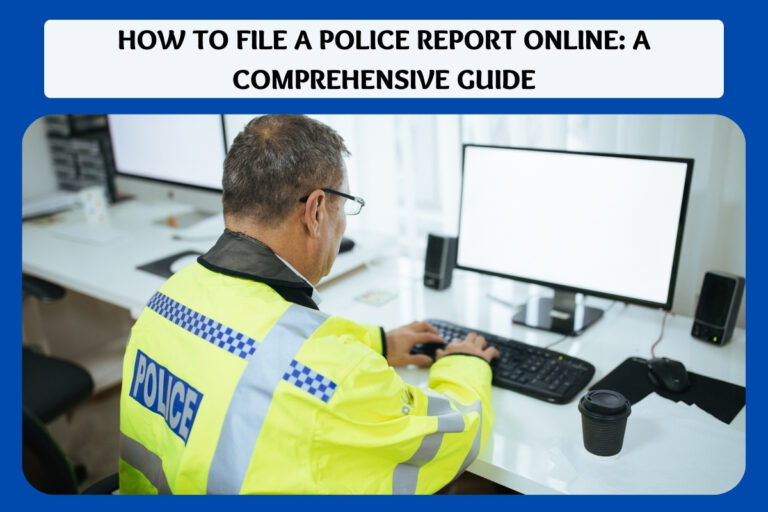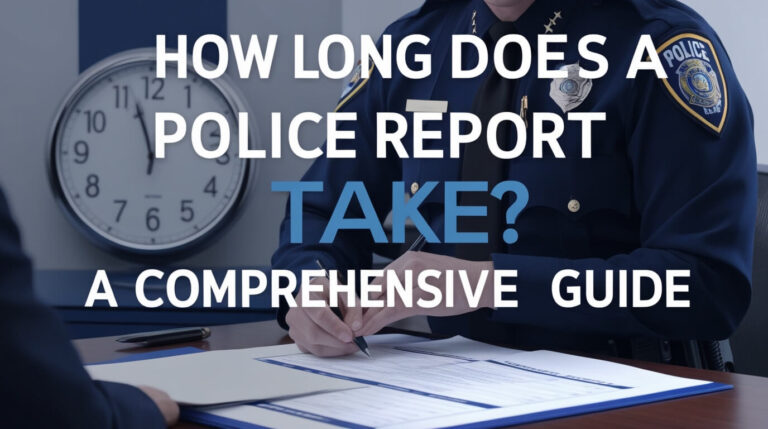Red Tape Meaning Police: Crime Scene Protocols & Guidelines 2024

Red police tape serves as a vital tool in modern law enforcement. The bright red barrier clearly marks sensitive areas where critical evidence needs protection. Law enforcement agencies worldwide rely on this simple yet effective system to maintain crime scene integrity.
Red Police Tape’s Critical Role in Crime Scene Management
The use of red crime scene tape revolutionized evidence protection protocols in December 2013. Before this date, police departments only used yellow tape for both outer and inner crime scene boundaries. This created confusion since officers couldn’t easily distinguish between general restricted areas and crucial evidence zones.
Crime Scene Investigation (CSI) units now use red tape specifically to mark inner crime scene boundaries. This inner zone contains vital evidence that requires careful processing and documentation. The red barrier creates a clear visual signal that tells everyone – even other officers – to stay out unless absolutely necessary.
The Evolution of Red Tape in Law Enforcement
Police departments discovered that using a single color of tape wasn’t enough for complex crime scenes. The yellow-only system made it hard to protect especially sensitive areas within the larger secured zone. CSI teams needed a way to highlight spots containing crucial evidence.
The red tape system solved this problem by creating a dual-zone approach. The outer yellow perimeter keeps the general public away. The inner red tape marks off the most critical areas where evidence processing must occur without contamination.
Red vs Yellow Crime Scene Tape Systems
Yellow tape creates the first line of defense around a crime scene. It establishes a wide security perimeter that keeps onlookers and unauthorized personnel at a safe distance. This outer boundary gives investigators room to work while maintaining public safety.
Red tape marks a second, more restricted zone inside the yellow perimeter. Only CSI team members and essential personnel can enter these red-taped areas. This dual-barrier system helps preserve evidence integrity by limiting foot traffic around crucial pieces of evidence.
Red Police Tape Protocols and Procedures
Strict protocols govern the use of red crime scene tape. The ranking officer at the scene must assign specific personnel to protect red-taped areas. These officers control access and maintain detailed logs of anyone who enters the restricted zone.
CSI teams set up red tape boundaries after completing their initial crime scene walkthrough. They carefully mark off areas containing physical evidence that requires processing. This creates clear work zones where investigators can document and collect evidence without interference.
Inner Crime Scene Boundaries
The red inner perimeter protects the heart of the crime scene. CSI teams place this tape strategically around:
- Areas with physical evidence
- Spots requiring detailed processing
- Zones containing trace evidence
- Locations needing special documentation
Evidence Protection Zones
Only authorized CSI personnel can enter red-taped evidence zones. Even high-ranking officers must get permission and document their entry. This strict access control helps:
- Prevent evidence contamination
- Maintain chain of custody
- Enable proper documentation
- Preserve scene integrity
Officer Assignment and Responsibilities
The lead officer must station personnel at red tape boundaries. These officers have several key duties:
- Control access to restricted areas
- Maintain the crime scene log
- Monitor evidence preservation
- Report any violations
Different Types of Police Tape Colors and Their Meanings
Law enforcement uses various tape colors to communicate different levels of restriction. Each color carries specific meaning and authority. Understanding these differences helps both officers and civilians know proper protocols.
Red Tape vs Blue Tape Usage
In many jurisdictions, blue tape marks the outer perimeter that stops public access. Red tape indicates inner zones with immediate safety concerns or crucial evidence. This color-coding helps quickly identify different security levels.
Yellow Tape Perimeter Guidelines
Yellow remains the standard for general crime scene boundaries. It creates the initial secure zone and warns the public to stay back. CSI teams often set up yellow tape first, then add red barriers as they identify critical evidence areas.
Red Police Tape Applications
Red police tape finds use in various scenarios beyond standard crime scenes. Law enforcement deploys it whenever they need to mark high-risk or sensitive areas that require strict access control.
Major Crime Scenes
Serious crime investigations require careful evidence protection. Red tape helps by:
- Marking blood evidence locations
- Protecting trace evidence
- Securing weapon recovery sites
- Preserving footprint evidence
Hazardous Areas
Red tape also warns of immediate dangers like:
- Unstable structures
- Chemical hazards
- Explosive materials
- Contaminated zones
Common Questions About Police Red Tape
Law enforcement often fields questions about red tape protocols. Clear answers help the public understand and respect these important boundaries.
Public Access Rules
Nobody can cross red police tape without explicit authorization. This rule applies to:
- Media personnel
- Local residents
- Government officials
- Emergency responders
Duration of Tape Placement
Red tape remains in place until CSI teams complete all necessary evidence processing. This can take hours or even days depending on:
- Scene complexity
- Evidence volume
- Processing requirements
- Weather conditions
Red Tape Rules and Regulations
Strict guidelines govern red tape usage at crime scenes. These rules ensure consistent evidence protection across different jurisdictions and scenarios.
Authorized Personnel Access
Only essential personnel can enter red-taped zones. Entry requires:
- Direct authorization
- Valid purpose
- Documentation
- Supervision
Crime Scene Integrity
Red tape helps maintain scene integrity through:
- Clear boundary marking
- Access restriction
- Contamination prevention
- Evidence protection
Safety Protocols
Safety remains paramount in red-taped areas. Guidelines require:
- Proper protective equipment
- Careful movement
- Evidence awareness
- Regular monitoring
Legal Requirements
Red tape carries legal authority. Crossing it without permission can result in:
- Criminal charges
- Evidence contamination
- Investigation compromise
- Legal consequences
Red police tape plays an essential role in modern law enforcement. It clearly marks crucial evidence zones and helps maintain crime scene integrity. This simple yet effective system continues to serve as a vital tool for police departments worldwide.






